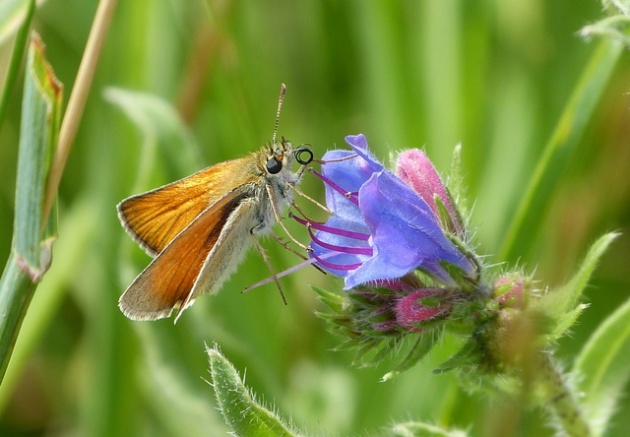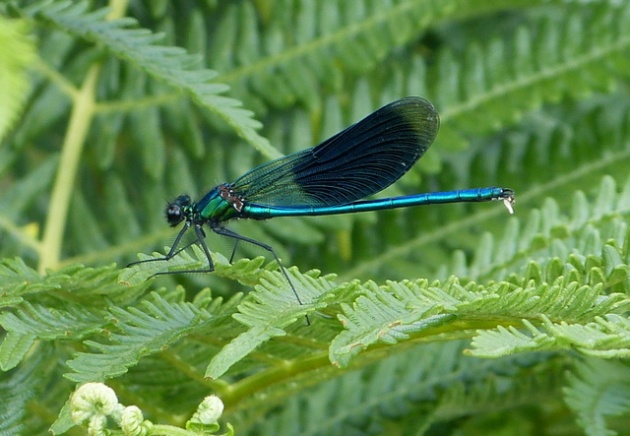Day 2 of a 2 day tour today, and down to the Norfolk/Suffolk border to catch up with the Breckland specialities.
We started at Lynford Arboretum with a particular request to see Firecrest. The first bird we saw was a Hobby, which flashed over the car park just as we got out. An initial walk round the arboretum itself failed to locate our quarry, despite the fact that it was alive with tits, particularly Marsh Tits, Nuthatches, Treecreepers, Goldcrests and Siskins. We decided to have a look round the paddocks which produced a nice Spotted Flycatcher and singing Garden Warbler. Walking back through the arboretum, we fortuitously picked up a Firecrest feeding quietly in one of its favoured fir trees.We managed to track it for a while, as it flitted quickly through the trees, though it only gave a quick and half-hearted burst of song.
With the first of our targets in the bag, we headed on to a nearby area of Thetford Forest. The cleared and replanted blocks of young pines in the forestry plantations are the place to look for Woodlarks and Tree Pipits. We quickly located several small groups of Woodlark, flushing some from the grass along the side of the path. However, they were initially being unhelpful and would not perch up for us to get a good look at them. In contrast, the Tree Pipits performed impeccably. We watched one male in particular, singing from the treetops on the edge of the clearing, fluttering up high into the sky before parachuting back to a favoured perch in the trees. We got great scope views of that one. Finally, as we turned to go back, we flushed another two Woodlarks which had landed back beside the path and they flew up into the top of a nearby oak tree. An adult and a juvenile, they perched up and allowed us to really get a good look at them.
In contrast, the pair of Stonechats were always on view, perched up and ‘chatting’, often followed closely by a Whitethroat or two. From their behaviour, it was clear they had young nearby and as we walked back along the path we could see them with at least two streaky juveniles. We stopped to get the scope on them and discovered the young had been colour-ringed, part of an ongoing project to track the movements of individual Stonechats.
In the sun, the Viper’s Bugloss along the edge of the paths was alive with butterflies and moths. In particular, large numbers of Small Skippers now flitted about alongside the Large Skippers which have been out for some time, and we also saw several brightly coloured burnet moths. A male Banded Demoiselle was a long way from any water.
We moved on to Lakenheath Fen for the afternoon. It was gloriously sunny as we arrived and strolled out across the reserve. From the New Fen viewpoint, we watched a Kingfisher zipping back and forth across the water, even landing briefly on the birdtable set up at the edge of the reeds. Several Bearded Tits were moving about between the reeds and a Hobby was hawking for dragonflies over the reeds. As ever, there were lots of dragonflies to be seen, including Common and Ruddy Darters, Brown Hawker, Black-tailed Skimmers and Four-spotted Chasers.
As we walked on, we could see dark clouds gathering ominously ahead of us. Thankfully we made it to the hide in time, before the rain started. We contented ourselves for a while watching the Bearded Tits and Reed Warblers clambering amongst the base of the reeds and a family of Marsh Harriers, including a couple of recently fledged chocolate-brown youngsters which perched rather clumsily in the reedbed scrub to sit out the rain. Unfortunately, the forecast showers turned out to be a more organised and slow-moving band of rain, which turned very heavy for a time. Eventually a decision was made to head back to the visitor centre as the rain eased slightly but by the time it started to clear through, we had run out of time in the day. Still, we had a very productive morning and the two days were thoroughly enjoyed by all concerned.
The participants unfortunately had to depart, but as the rain cleared later that afternoon I decided to stop off at Weeting Heath to check on the Stone Curlews. I was suitably rewarded, with a minimum of 10 different birds on view together. Pairs and small groups were running to and fro, chasing each other, and flying round in front of the hide. There was lots of calling and ‘wing waving’, and some bowing between the pairs, before the birds gradually started to fly off in ones and twos onto the neighbouring farmland. Magical.


















